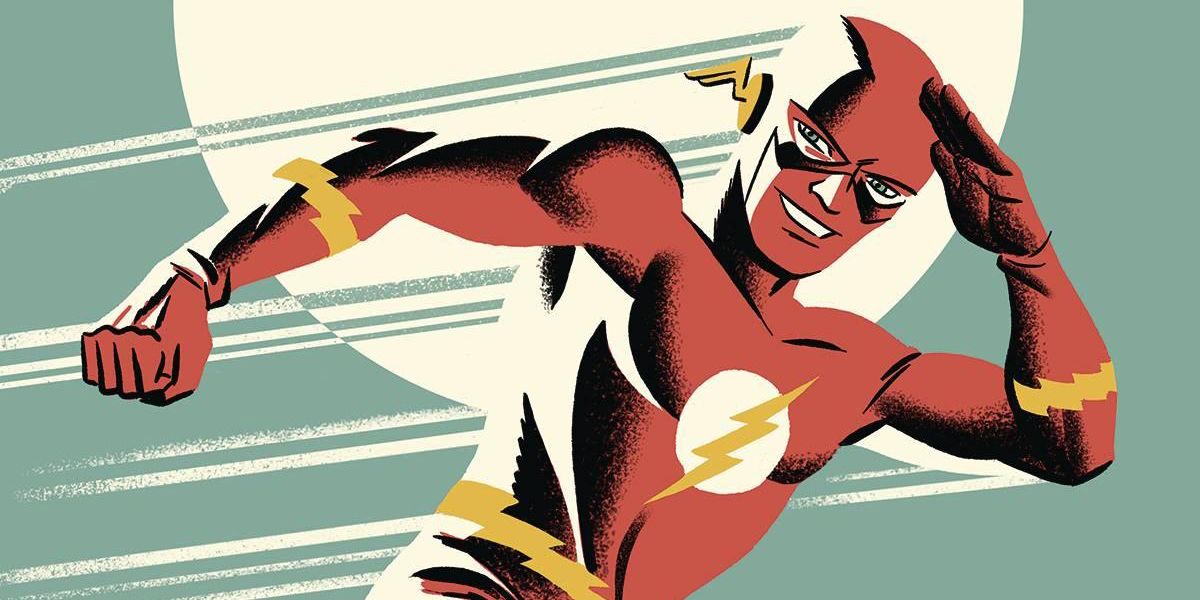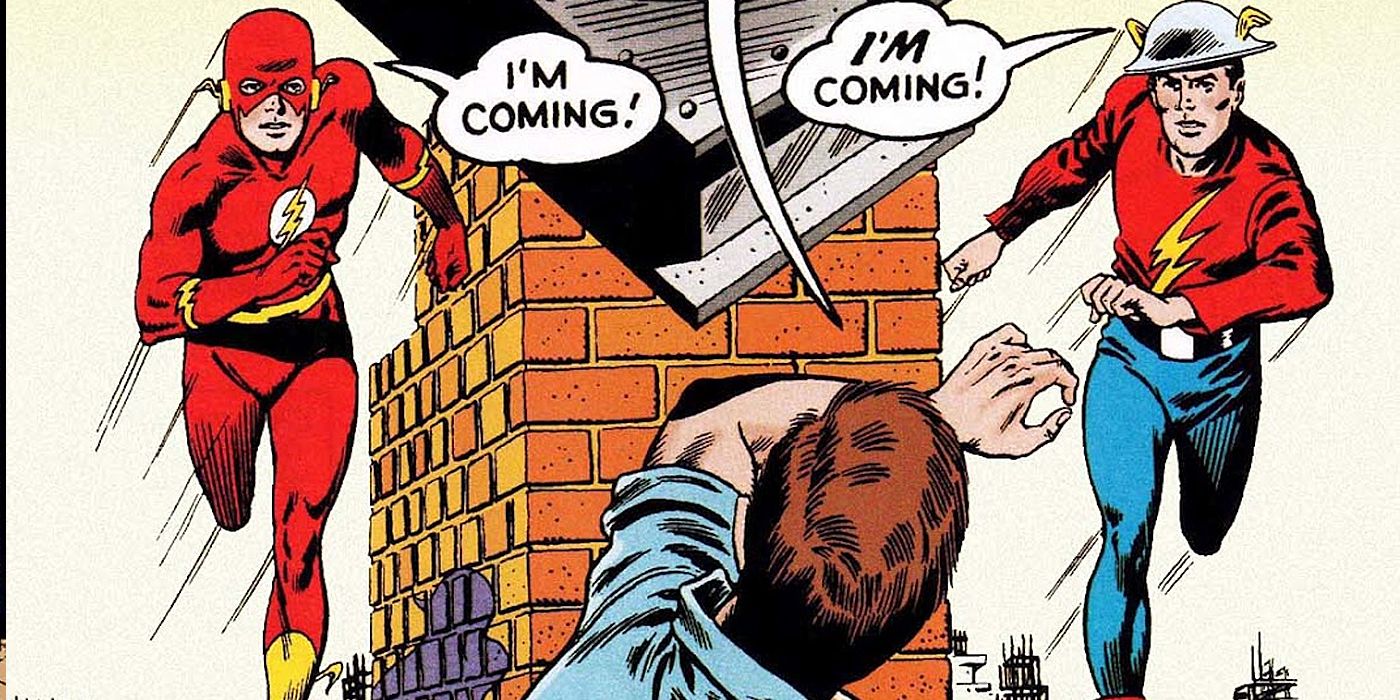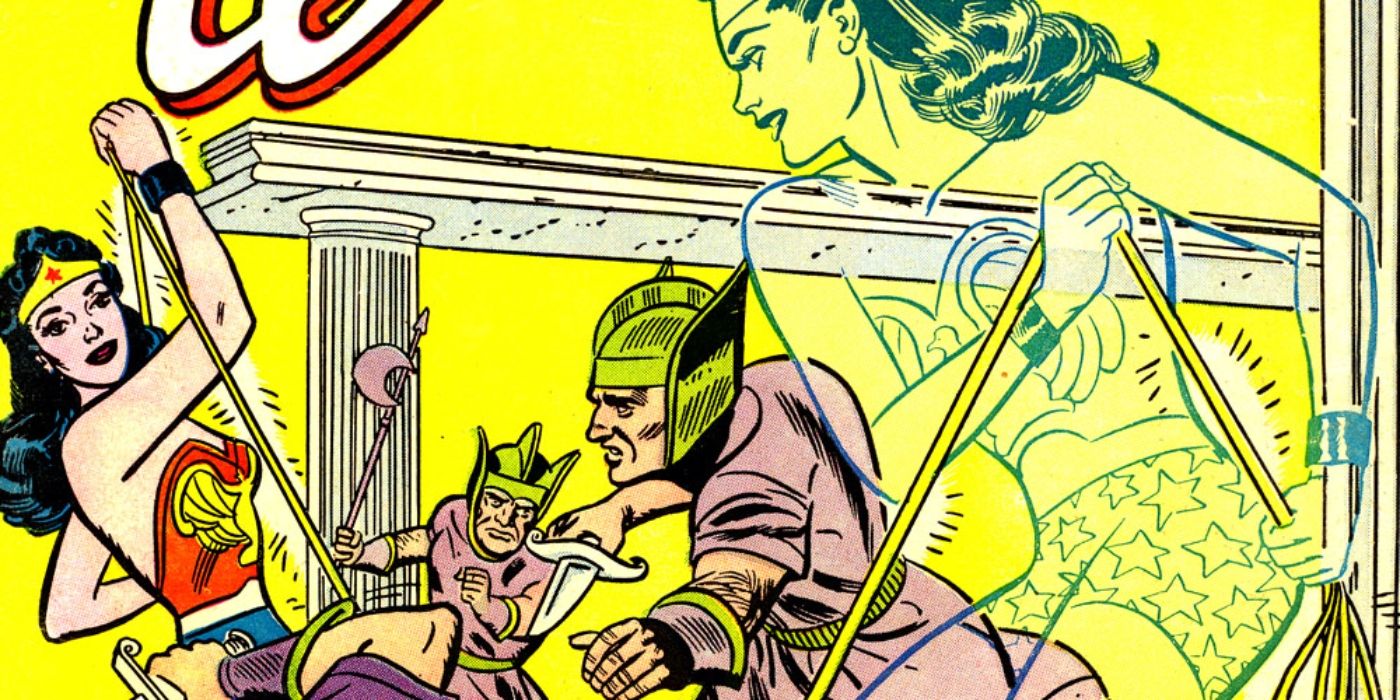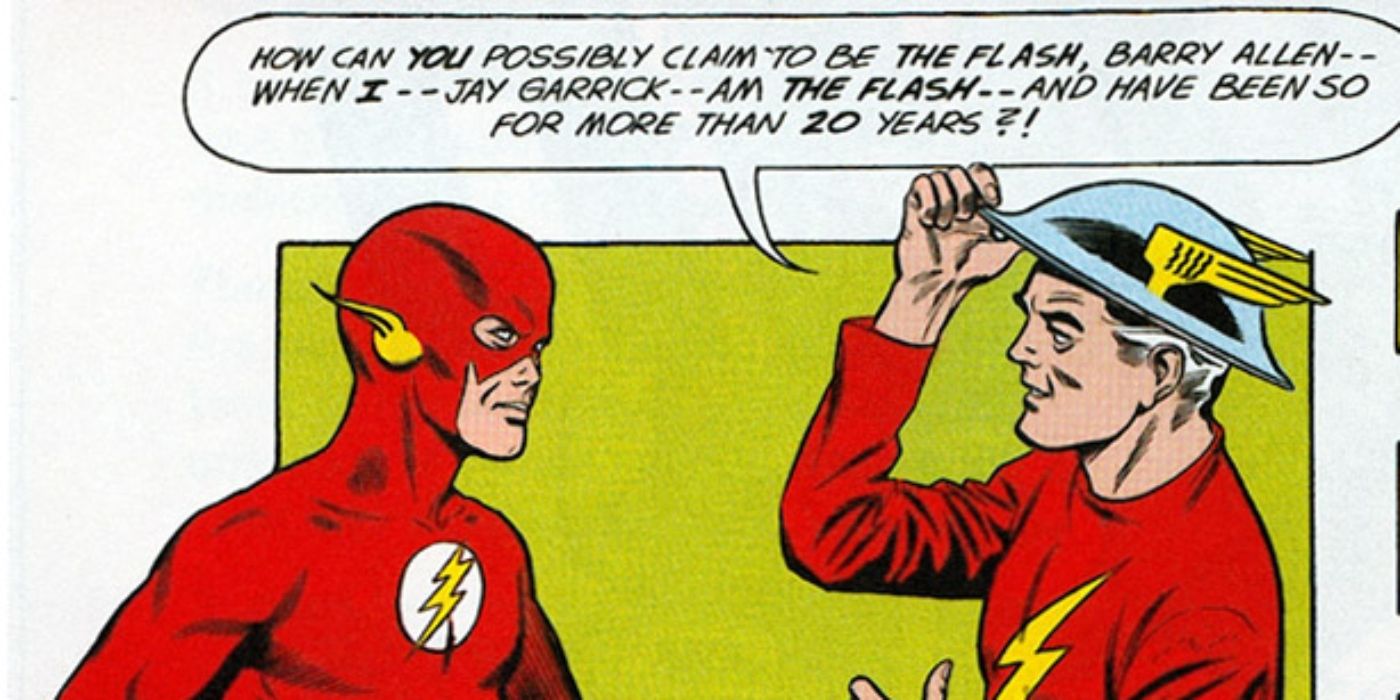The Flash and his ability to traverse the timeline -- even moving across realities themselves -- have always made him a supremely powerful superhero. But while he may be one of the heroes who most frequently hops to other realities and famously one of the earliest to do so, doesn't mean he was actually the first DC hero to do so.
With that said, let's look at how Wonder Woman actually teamed-up with an alternate reality counterpart long before the Flash stole her trick.
"FLASH OF TWO WORLDS"
The Flash #123, by Garnder Fox and Carmine Infantino, is held up as a landmark issue of comic book history. The story focuses on Barry Allen performing a number of super-speed tricks to impress a group of children. But when Flash vibrates his molecules too fast, he ends up accidentally bringing himself to Keystone City on Earth-2. Home of the Golden Age Flash, aka Jay Garick, Barry ends up using his knowledge of the world -- which was a comic book fiction in his reality -- to find Jay just as he prepares to leave retirement and resuming being the Flash to bring down a band of his former enemies.
The success of the issue led to more crossovers between Earth-1 and Earth-2, eventually building to a more fully fleshed out multiverse of alternate worlds. This concept has been at the heart of the DC Universe ever since, with many of the company's biggest storylines (such as Crisis on Infinite Earths and even the currently-running Dark Knight: Death Metal) being dedicated to the fate and survival of the multiverse as a whole. However, it wasn't the first story with a DC associated character working alongside an alternate reality counterpart of themselves.
HOW DID WONDER WOMAN BEAT FLASH TO THE MULTIVERSE?
In the story "Wonder Woman's Invisible Twin" from Wonder Woman #59 by Robert Kanigher and Harry G. Peter, the Wonder Woman of what would later be defined as Earth-1 found herself teaming up with a surprising ally -- Princes Tara Terruna, the Wonder Woman of a separate reality. The story opens with Wonder Woman being confounded by her reflection, which seems to be rebelling against her. Everywhere she sees it, it's as if an invisible force attacks her -- preventing her from carrying out her job as a hero. When her Lasso of Truth is struck by lightning, Diana is flung off the bridge she's on and sent careening into an entirely different reality.
There, Diana is warned of an attacking nearby ship by Tara. Tara introduces herself as the Wonder Woman of her world and explains that in this world, the Amazons had been conquered by Duke Dazam. It's revealed that all of the attacks Wonder Woman has been suffering has been a result of a connection between the pair, with attacks on Tara and her movements affecting Diana. Realizing this means that there are multiple Earths, the two heroines work together to attack Duke Dazam and topple his rule. Diana is returned to Earth-1 by a sudden and massive storm similar to the one that sent her there in the first place, and Wonder Woman is reinspired to continue her battle against evil.
WHY "WONDER WOMAN'S INVISIBLE TWIN" IS FORGOTTEN
Diana's excursion to Tara's world -- later dubbed Earth-59 in the Pre-Crisis DC Universe- - actually came out in 1953. Meanwhile, "Flash of Two Worlds" came out almost a decade later in 1961 during the resurgence of superheroes during the Silver Age of Comics. This means that despite his powers giving him an easy ability to move between realities, Flash wasn't in fact the first DC hero to go on a multiversal journey. Wonder Woman's multiversal journey just happened to come during a period where superhero comics had largely fallen out of vogue in lieu of other genres like horror, sci-fi and romance comics.
The creation of Earth-2 proved more notable in the long-run because it found a way to tie Jay Garrick and all of his associated characters to the DC Universe of the time. It also came during a time of rejuvenated interest in superheroes. While Tara Terruna is ultimately a near-carbon copy of Wonder Woman and was only introduced in that storyline to go on and never really appear again, Jay Garrick had been a foundational superhero and part of the original generation of characters for the genre during its creation in the Golden Age. His team-up with his successor is inherently a more meaningful event for fans who remembered the original Flash. It had a direct impact on the ever-expanding DC Multiverse and led to the now-classic Justice League/Justice Society team-up crossovers.
Those kinds of stories, and the popularity they enjoyed, gave way to the DC Multiverse as we know it today. "Flash of Two Worlds" is more important in the grand scheme of things, proof to future creators that there's an entire multiverse of possibilities and heroes just waiting to be created for the DC Universe. But it's still worth noting that Flash didn't come first in the race to break the multiversal barrier.




